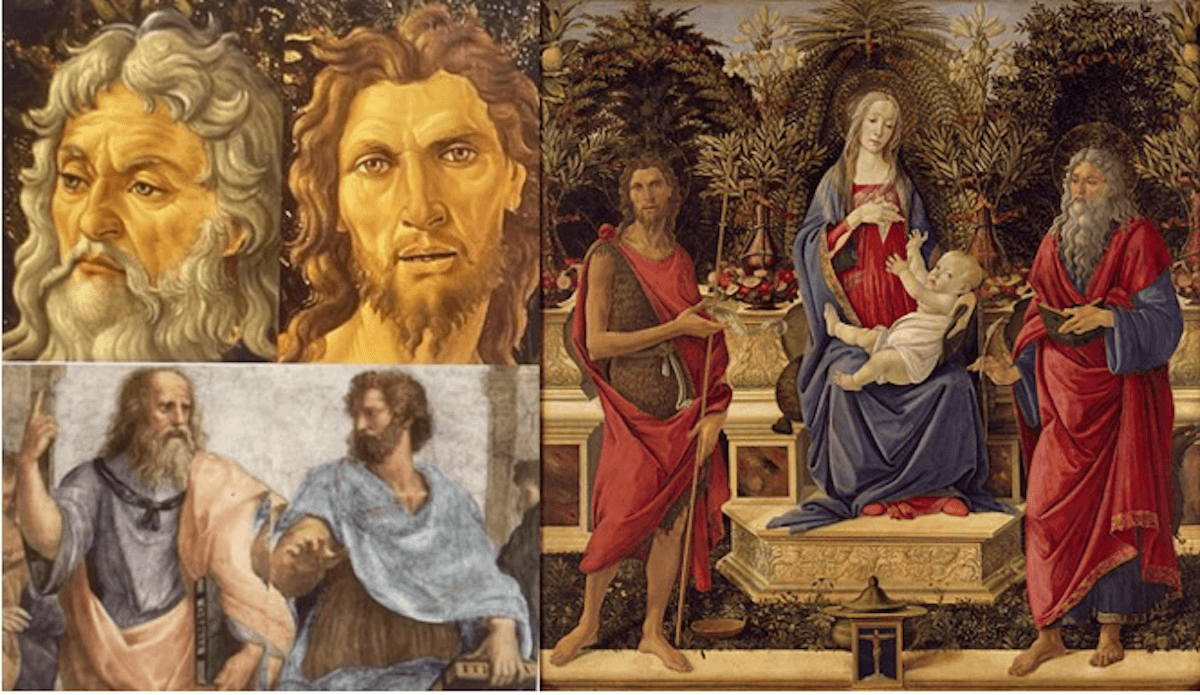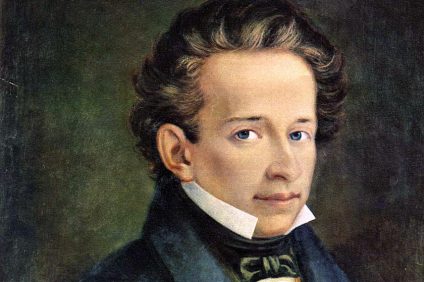The beauty of art is that it always manages to amaze, even after centuries. This is possible thanks to the work of art experts, who in the works manage to find details and apparently hidden references left by the artists. One of the most interesting latest discoveries in this sense concerns the "Madonna Bardi"of Sandro Botticelli (1484/1485), kept in the museum Picture gallery di Berlin. The art expert Annalisa of Maria, member of the Board of Directors of the Unesco Center of Florence, and specializes in Leonardo Da Vinci and Renaissance painters, in analyzing the work of Botticelli theorized that the two saints portrayed on the sides of the Virgin (St. John Baptist e John the Evangelist) would actually be the Greek philosophers Plato e Aristotle. Analyzing the work more in depth, even the scene in the background recalls the gardens dedicated to the mythical hero "Academy", Seat ofAcademy, the school founded by Plato.
Sandro Botticelli and the Neoplatonic Academy of Florence
Plato, had a great influence in Florence Renaissance. In 1462, Marsilius Ficino in fact he founded theNeoplatonic Academy of Florence, at the behest of Cosimo de 'Medici. The latter's nephew, Lorenzo the Magnificentinstead, he celebrated every year a feast in honor of the philosopher. Furthermore Leonardo Da Vinci, on the cover of his "Treatise on painting"He wrote"Nobody reads me if he is not mathematician, because I am always in my principles", Motto similar to that ofPlato's Academy, or"Do not enter anyone who does not know geometry". Like his contemporaries, Sandro Botticelli was also influenced by Plato and in the work "Madonna Bardi" he decided to celebrate the great philosopher and his disciple. According to the scholar Annalisa di Maria, Botticelli wanted in this work unite Christianity and Platonism, exactly what the Neoplatonic Academy of Florence set out to do.
Botticelli, in addition to being a great painter, was in fact also one of the greatest exponents ofhumanism promoted by Lorenzo Il Magnifico. In his works it was in fact to use coded symbols and messages of which only scholars could understand the meaning. Botticelli also had a great admiration for the Medici family. The Florentine artist, in the work "The Madonna and Child with six saints”(1470) portrayed them as saints next to the Virgin.

Botticelli then included the Medici in the work "The Adoration of the Magi"(1475-1476), together with other academics, such as Pico della Mirandola e Angelo Poliziano, both closely linked to Botticelli. The text of the "Speech on the dignity of man”By Pico della Mirandola makes itself felt in the iconography of Botticelli's Calluna. In Poliziano, Botticelli meets his dreamed friend, the poet with a soul mate who will help him with devotion and enthusiasm in his most ambitious creations.

The encounter between humanism and Platonism in the "Madonna Bardi"
The analysis carried out on the "Madonna Bardi" reveals how the elements that make up the work perfectly translate the Neoplatonic thoughts of Botticelli. The artist represents the Virgin as a "Madonna Humanitas”, Under whose protection the philosophers of the Platonic school of Medici villa of Careggi. This expresses the desire for a reform of the Church in the light of the universal wisdom inherited from the Greco-Latin tradition and the truths of the two testaments. The symbols incorporated in the decorations of Botticelli's works are a 'legacy of Greek antiquity, keystone and architectural symbol of the ancient world. The genius of Botticelli, explains Di Maria, lies precisely in this symbolism And in the humanist thoughts carried in his works. The new language of mythology and references to ancient philosophy did not lead to the rejection of the truths of the Christian faith. Botticelli was aware of this and therefore wanted to leave traces of that dream of the humanists in his masterpieces.





